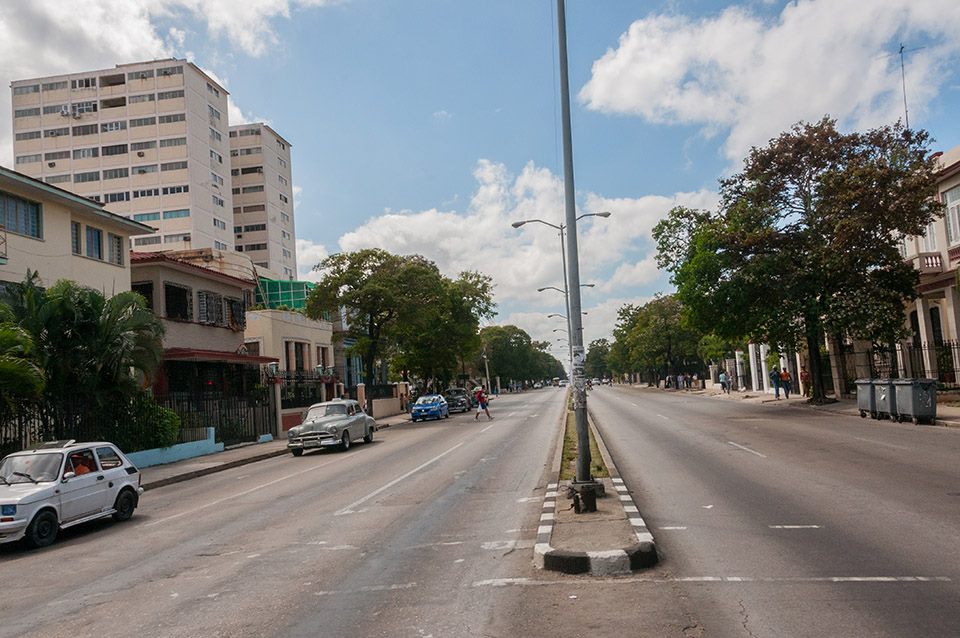The Carnival of Santiago de Cuba took to the streets of the city in the early twentieth century. This does not mean that these were their origins. Really the musical excitement was uncontrollable much earlier, in colonial times. At that time the slaves celebrated and sang his saints. Why are held in July, reaching its best day of Santa Cristina, July 24, Santiago Apostle (Patron of Santiago de Cuba), July 25, and Santa Ana and San Joaquin, July 26. Continuing the party until the end of the month.
Already in June the “trials” are in full swing. Congas and walks practice their steps, giving the best of themselves, encouraged by winning first place at the end of the festivities. Many of the participants are members of families who for generations have taken part in these celebrations, proudly bearing the name of your neighborhood.
Already this month Santiago de Cuba vibrates. The Chinese bugle sounds accompanied the drum when congas can not stop the streets and out to celebrate. It is the day of San Juan, on 24 June, and again in San Pedro, 29, when everything Santiago responds with warm enthusiasm.
The Santiago and carnival become one. Interact at the same pace. For two weeks in late July (previously longer) joy and hospitable spirit spread and bewitch participants and spectators alike, becoming all part of the carnival. Our greetings to all santiagueros wherever in the world they are and thanks for letting us even though we are far from his beloved city, enjoy.
Vimeo / Molina’s / Carnivals of Santiago de Cuba “.
The Cuban History, Hollywood.
Arnoldo Varona, Editor.
RECUERDOS DE UNA VIEJA CAMARA.
El carnaval de Santiago de Cuba se llevó a las calles de la ciudad a principios del siglo XX. No quiere decir esto que esos fueron sus orígenes. Realmente el entusiasmo musical ya era incontrolable desde mucho antes, en tiempos de la colonia. En aquel entonces los esclavos celebraban y cantaban a sus santos. Por eso se celebran en el mes de julio, llegando a su mayor expresión los días de Santa Cristina, 24 de julio, Santiago Apóstol (Patrón de Santiago de Cuba), 25 de julio, y Santa Ana y San Joaquín, 26 de julio. Continuando la fiesta hasta finales del mes.
Ya en junio los “ensayos” están en pleno desarrollo. Las congas y los paseos practican sus pasos, dando lo mejor de sí, animados por obtener el primer lugar a finales de las festividades. Muchos de los participantes son miembros de familias que por generaciones han tomado parte en estas celebraciones, con orgullo llevando el nombre de su barrio.
Ya en este mes Santiago de Cuba vibra. La corneta china se oye acompañada del tambor, cuando las congas no se pueden detener y a las calles salen a celebrar. Es el día de San Juan, el 24 de junio, y otra vez el de San Pedro, el 29, cuando todo Santiago responde con caluroso entusiasmo.
El santiaguero y el carnaval se convierten en una sola cosa. Interactúan al mismo compás. Por dos semanas a finales de julio (antes eran más prolongados) la alegría y el espíritu hospitalario contagian y embrujan a participantes y espectadores por igual, llegando a ser todos parte del carnaval. Nuestros saludos a todos los santiagueros donde quiera en el mundo que se encuentren y nuestro agradecimiento por permitirnos, aun cuando estamos lejos de su querida ciudad, gozar.
Vimeo/Molina’s/ Carnavales de Santiago de Cuba”.
The Cuban History, Hollywood.
Arnoldo Varona, Editor.



